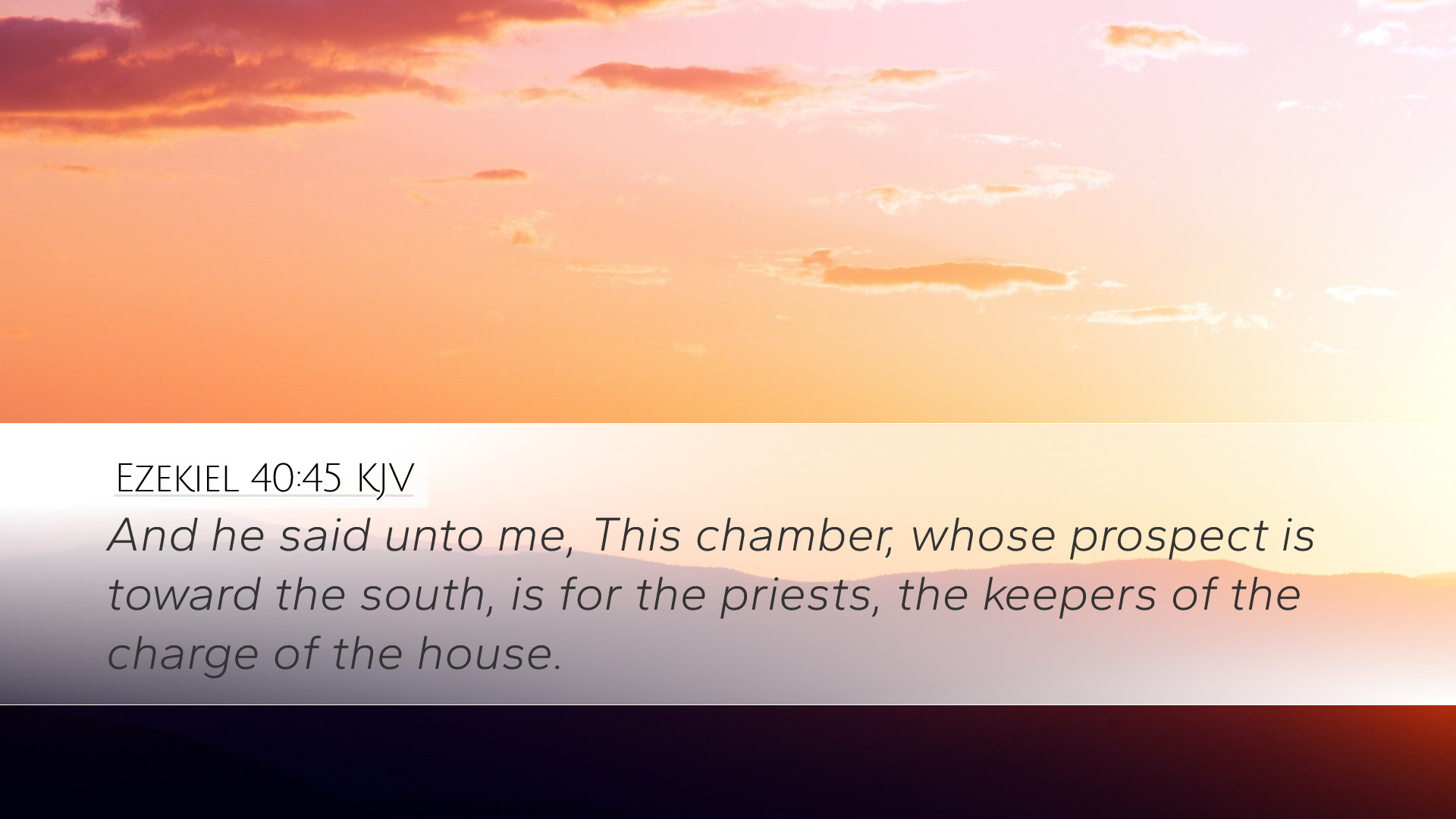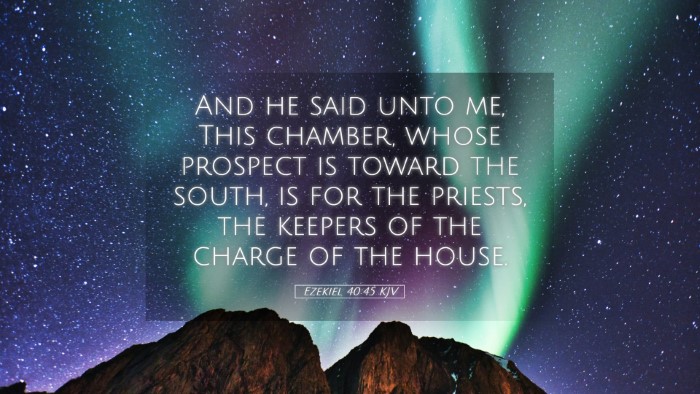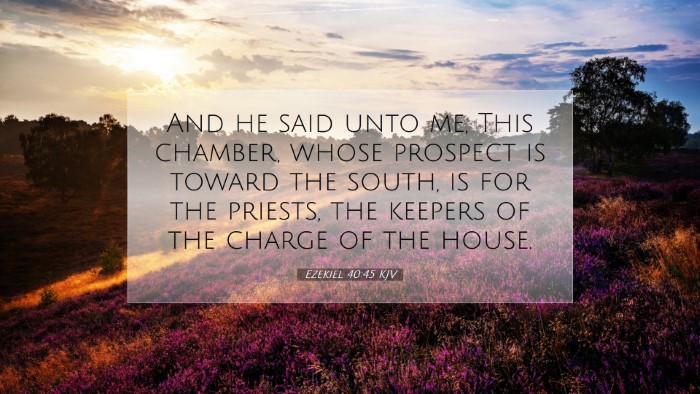Ezekiel 40:45 Commentary
Verse Reference: Ezekiel 40:45
This scripture is part of a comprehensive vision that Ezekiel received regarding the future temple, its measurements, and its significance. Ezekiel 40:45 states:
"And he said unto me, This chamber, whose prospect is toward the south, is for the priests of the course of the South." (Ezekiel 40:45 KJV)
Understanding the Context
The prophet Ezekiel, during his exile in Babylon, experienced a series of visions that guided the people of Israel back to their covenant relationship with God. Chapters 40-48 specifically focus on the vision of the restored temple, which serves as a symbol of God's presence and holiness to His people.
The Significance of the Temple
The temple is depicted as a place of divine encounter, bringing back the ideals and practices of worship that the Israelites lost during their captivity. As noted by Matthew Henry, the temple represents God’s intention to dwell among His people. The restoration of the meaning and function of the temple is critical for understanding the future hope for Israel.
Understanding the Priestly Chambers
Ezekiel 40:45 specifically refers to the designated chambers for the priests, which serve dual purposes:
- Housing priests during their duties.
- Providing space for the priests to prepare for their sacred service.
Adam Clarke emphasizes that the specific designation of chambers illustrates God's order and organization in His worship. Each chamber's location and purpose underline the holiness and sanctity associated with priestly duties.
The Role of the Priests
In the context of the temple, the priests functioned as mediators between God and the people of Israel. As described by Albert Barnes, the priests were responsible for offering sacrifices, maintaining the holy space, and ensuring that the ordinances of God were fulfilled. Barnes notes the South course of priests implies specific duties aligned with the temple’s proper functioning.
Priestly Orders and Their Importance
The mention of the "course of the South" highlights the different priestly orders outlined in the Old Testament, specifically in 1 Chronicles 24. This system of rotation exemplifies God’s perfect order in worship and serves as a reminder for modern believers about the structured approach in our service to God.
Theological Implications
This text invites a reflection on the themes of:
- Worship: The established protocols for worship signify the importance of approaching God with reverence and order.
- Holiness: The delineation of priests and their responsibilities emphasizes the call to holiness and being set apart for God’s service.
The South Chamber's Symbolism
The south-facing chamber denotes a positional perspective in the temple complex. Matthew Henry suggests that the orientation of various components of the temple may symbolize the spreading of God's influence and favor towards the nations. Such a directional perspective implicates blessings that should flow from the temple into the world.
Practical Applications for Today's Believers
For pastors and church leaders, Ezekiel 40:45 serves as a profound reminder of the importance of properly structured worship and leadership within the church. The necessity for order and sacred space maintains a respectful atmosphere for congregational worship, reflecting God's holiness.
Lessons for Ministry
- Organization: Just as the chambers were organized for specific functions, churches today must establish systems for ministry leadership that honor God and respect His order.
- Encouragement to Holiness: The priests were called to uphold holiness. Church leaders should encourage their communities to live in a way that reflects the transformative power of God.
- Living Temple: In light of the New Testament teachings, believers themselves are considered the temple of the Holy Spirit (1 Corinthians 6:19). This calls for personal and communal sanctity, aligning our lives with God’s holiness.
Conclusion
Analyzing Ezekiel 40:45 reveals profound insights into the design and purpose of the temple, the role of the priests, and the implications for worship. As these ancient insights resonate with current practices in ministry and personal faith, they provide a foundational understanding of how the Old Testament informs our understanding of holiness, worship, and God's covenantal relationship with His people. The structured approach to worship encapsulated in Ezekiel's vision should inspire today’s church to maintain a commitment to reverence, organization, and a heart devoted to God.


